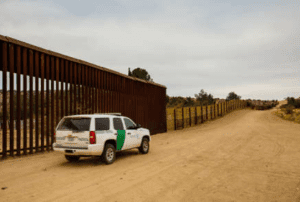 The issue of alternate realities pervading American society is complex and multi-faceted. One of the most potent drivers is economic incentives. The internet has fundamentally transformed the business models of many media outlets, creating a high-stakes competition for advertising revenue. This is largely dependent on page views and viewer engagement, thus incentivizing the promotion of sensational or controversial content. Moreover, as American society becomes increasingly segmented along political, ideological, and social lines, media outlets find it profitable to serve these niche markets by catering to specific belief systems. This creates a loyal and stable consumer base but also narrows the range of viewpoints to which audiences are exposed.
The issue of alternate realities pervading American society is complex and multi-faceted. One of the most potent drivers is economic incentives. The internet has fundamentally transformed the business models of many media outlets, creating a high-stakes competition for advertising revenue. This is largely dependent on page views and viewer engagement, thus incentivizing the promotion of sensational or controversial content. Moreover, as American society becomes increasingly segmented along political, ideological, and social lines, media outlets find it profitable to serve these niche markets by catering to specific belief systems. This creates a loyal and stable consumer base but also narrows the range of viewpoints to which audiences are exposed.
Technological advancements also play a significant role in shaping these alternate realities. Algorithms employed by social media platforms are designed to show users content that they are more likely to engage with. This has the unintended consequence of creating ‘echo chambers,’ spaces where one’s preexisting beliefs are continuously reinforced, diminishing the need for factual verification. Additionally, the democratization of information through the internet, while a positive development in many ways, has lowered the barrier to entry for content creation. This can make the media landscape susceptible to misinformation, as there are fewer checks and balances in place to ensure accuracy.
Political factors further exacerbate the situation. In a highly polarized climate, there is a heightened demand for media that confirms one’s existing biases, irrespective of factual accuracy. Regulatory frameworks have been slow to adapt to the rapidly changing media environment, leaving gaps that can be exploited to spread misleading or biased information.
Cultural shifts in society have also played a role. The rise of postmodern thought, which questions grand narratives and the very notion of objective truth, has paved the way for the acceptance of multiple realities. Additionally, present-day moral and cultural norms are sometimes retroactively applied to historical events, thereby distorting our understanding of the past. This kind of cultural revisionism can contribute to the rise of conspiracy theories, which in turn feed the perception of alternate realities.
A lack of media literacy among the public can make these alternate realities more entrenched. Many people, particularly older generations, may lack a comprehensive understanding of how to navigate the digital information landscape. They may rely on traditional media outlets, which are themselves struggling to remain financially viable and relevant, thereby reducing the depth of investigative journalism that once was their hallmark. Simultaneously, younger generations may not be well-versed in the intricate workings of government, including the checks and balances built into the American system, making them more susceptible to radical ideas that could destabilize established norms. This collective lack of media literacy and critical thinking skills leaves the American public vulnerable to misinformation.
All these factors converge to create a scenario where Americans find themselves caught between conflicting narratives. For example, politicians may claim that the southern border is secure, while media footage shows people crossing it in large numbers. The increasingly divergent realities presented by different actors in society make it difficult for the public to discern fact from fiction, leaving many to wonder what, or whom, they should believe. The phenomenon of alternate realities, it seems, is deeply entrenched in modern American life, influenced by a confluence of economic, technological, political, and cultural factors.